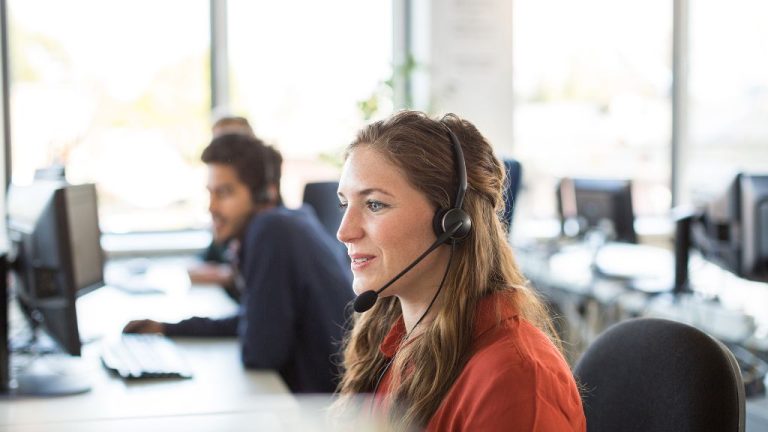Will I Still Get My Order If Its Backordered?
What is a backorder?
A backorder occurs when an ecommerce retailer does not have adequate inventory of a particular item to fulfill an order. The retailer will put the out-of-stock item on backorder and when more stock becomes available, they will use that inventory to fulfill the backordered purchase.
Items can become backordered for a variety of reasons. Sometimes there is an unexpected surge in demand that exceeds the available inventory. Manufacturing or supply chain issues may also cause inventory shortages, leading items to be placed on backorder until more stock is produced and delivered. Discontinued products can also cause backorders if an item sells out before the retailer has a chance to remove it from their catalog.
Will I still receive my order?
Yes, you will still receive your order even if an item is backordered. When you place an order and an item is listed as backordered, it simply means that the item is temporarily out of stock. The retailer does not currently have enough inventory to fulfill that part of your order. However, accepting a backorder means the retailer will ship the item to you automatically once it becomes available again in their warehouse. So you will still get the item you ordered, it will just take longer than originally estimated.
Backordering an item ensures your place in line to receive more inventory. The retailer reserves the next shipments of that item for customers like you who already placed an order. You essentially booked that inventory by accepting the backorder. So rest assured you will still get your full order even if part of it is backordered when you first place it. The shipment will just be split into separate deliveries as inventory becomes available.
When can I expect my backordered item?
The timeframe for receiving a backordered item can vary depending on the retailer and product. Generally, retailers will provide an estimated delivery date or shipping timeframe when an item is backordered. This estimated date is based on when the retailer expects to receive new stock from their distributors or manufacturers.
Some common timeframes for receiving backordered items include:
- 1-2 weeks
- 2-4 weeks
- 4-6 weeks
- 6-8 weeks
However, delays can happen and the timeframe may get extended if the retailer encounters further inventory shortages. According to ShipBob, the average backorder takes 2-3 weeks to fulfill, but can take up to 8 weeks in some cases.
Once the retailer receives the new inventory from their suppliers, they will pick, pack, and ship out the backordered item. The customer will receive a shipping confirmation email with tracking information once this process is complete.
If the timeframe gets delayed significantly beyond the original estimate, the retailer may reach out to offer the customer alternate solutions, such as:
- Suggesting a replacement product that is currently in stock
- Offering a discount on the backordered item
- Allowing the customer to cancel the backorder
Why was my item backordered?
There are a few common reasons why an item may be put on backorder when you place an order:
High demand – If an item is very popular or is a hot new product, the demand from customers may temporarily exceed the available supply. The inventory can sell out quickly before the retailer can restock. This will cause any additional orders for that item to be backordered until more inventory arrives.
High demand is one of the most frequent causes of backorders as companies work to forecast inventory needs and keep up with customer orders.
Low inventory levels – Even steady-selling products can go on backorder if the inventory levels drop before new stock arrives. Ongoing supply and logistics issues over the past couple years have made it difficult for some retailers to maintain consistent inventory.
Manufacturing delays – Problems at the manufacturing stage can lead to hiccups in the supply chain that create shortages leading to backorders. Whether it’s a missing component or factory shutdowns, manufacturing delays limit availability of the final product.
Restocking takes time – Once an item does sell out, it takes time for the retailer to receive more stock from the manufacturer. This turnaround time for restocking depends on the supply chain but may be several days or weeks depending on the product and supplier.
Essentially, backorders occur when customer demand temporarily surpasses the immediately available inventory. While inconvenient, it’s a normal consequence of the dynamic supply and demand nature of commerce.
Can I cancel a backordered item?
The ability to cancel a backordered item will depend on the retailer’s policies. Many retailers allow customers to cancel backordered items, but their policies can vary.
According to Ugg’s Backordered Item FAQs, in most cases backordered items can be cancelled. This will remove the authorization hold and release the funds back to your account. Some other retailers like Bookshop.org also allow cancellation of backorders at any time for a full refund until the order begins processing for shipment, as noted on their support page.
To cancel a backordered item, you will need to contact the retailer’s customer service team, typically by phone, email, or through an online form. Provide them with your order number and specify which backordered item(s) you want to cancel. The refund timeframe will depend on the original form of payment.
Cancelling backorders quickly can help avoid unnecessary holds on your funds and allow you to seek out the item from another retailer if needed. Just be aware of each retailer’s specific policies before placing a backorder.
Will I be charged for a backordered item?
When an item is backordered, the timing of the charge depends on the retailer’s policies. Many retailers will not charge your payment method until the item ships. For example, according to a Reddit discussion thread, Lego’s policy is that “Your credit card will not be charged until your order is shipped. […] We will authorise your credit card at the time of your order” (Source).
However, some retailers may place an authorization hold on your payment method when you place the order, even if the item is backordered. The charge may not fully process until shipment. As noted in a RedFlagDeals forum, “Backordered items should only be charged when they ship. In my case, I was not notified that an item was backordered. The packing slip in the box showed the backorder” (Source).
To avoid surprises, it’s best to contact the retailer directly and ask about their backorder policy. Make sure you understand when you will be charged and if a hold will be placed on your payment method when ordering a backordered item.
How will I know an item is backordered?
There are a few main ways you can find out if an item in your order is backordered:
Most online retailers will clearly indicate on the product page if an item is out of stock or on backorder. You’ll often see a notice like “Backordered” or “Out of Stock” under the product name or price.
When you place the order, the retailer’s order confirmation and receipt will also call out any backordered items. You may see notes like “2 items from your order are now backordered” with details on those specific products.
After ordering, the merchant will send you email and account notifications about backordered products in your purchase. These communications provide updates on estimated ship dates and inventory status. For example, an email may say your backordered item is “expected to ship in 2 weeks” once it’s back in stock.
You can also log into your account on the retailer’s website to check your full order status. The order tracking page will indicate if any items are backordered, pending, or partially shipped.
So in summary – notifications on the product page, order confirmation, post-purchase emails, and your account order status are the main ways you’ll be informed about backordered items.
What are my options for a backordered item?
If you find that an item in your order is backordered, you typically have three options:
Wait for the backorder – You can choose to keep the backordered item in your order and wait for it to come back in stock. The item will ship separately once available, often at no additional shipping cost. Waiting for the backorder allows you to still receive the specific item you originally ordered.
Cancel the backorder – You can decide to cancel the backordered item from your order. You won’t be charged for a cancelled backorder. This allows you to receive the rest of your order sooner without the delayed item. However, you’d have to place a new order if you still want that item later.
Substitute for a similar item – Some retailers allow you to substitute a backordered product for a similar, in-stock item. This allows you to receive your full order faster, but with a slightly different product than originally ordered. Be sure to check policies on substitutions.
Knowing these options empowers you to choose how to best handle a backordered item per your needs and preferences.
How can I avoid backorders?
There are a few ways customers can try to avoid items going on backorder when placing an order:
- Choose in-stock items. Check the product page or listing to confirm the item says “In Stock” before adding to your cart. Items noted as out-of-stock or backordered should be avoided.
- Allow flexible shipping dates. Opting for the standard or economy shipping option gives the company more time to source the item before your order ships out.
- Order early. Placing your order with plenty of time before you need an item increases the chances it will ship out as expected. Last-minute purchases right before holidays or busy times have a higher risk of backorders.
However, even when customers take precautions, backorders can still occur due to unexpected demand or other factors outside shoppers’ control. But taking these proactive steps can reduce the likelihood.
The bottom line
Backorders occur when the demand for a product exceeds the available supply. This is most often caused by surges in customer orders or delays in manufacturing or shipping. While backorders can be frustrating for customers eagerly awaiting their orders, they are a normal part of business.
If an item in your order is backordered, rest assured that you will still receive it once it’s back in stock. The item will simply ship separately later than the rest of your order. You will not be charged until the item ships. The retailer should notify you of any backordered items and provide an estimate for when they expect to fulfill the backorder. This may take days, weeks, or sometimes months depending on the cause of the backorder.
While backorders are out of your control, you can take steps like allowing flexible shipping dates, choosing in-stock alternatives, or canceling the backordered item if the delay is unacceptable. With patience and communication with the retailer, backorders are usually just a minor inconvenience and your order will be fulfilled once inventory allows.





